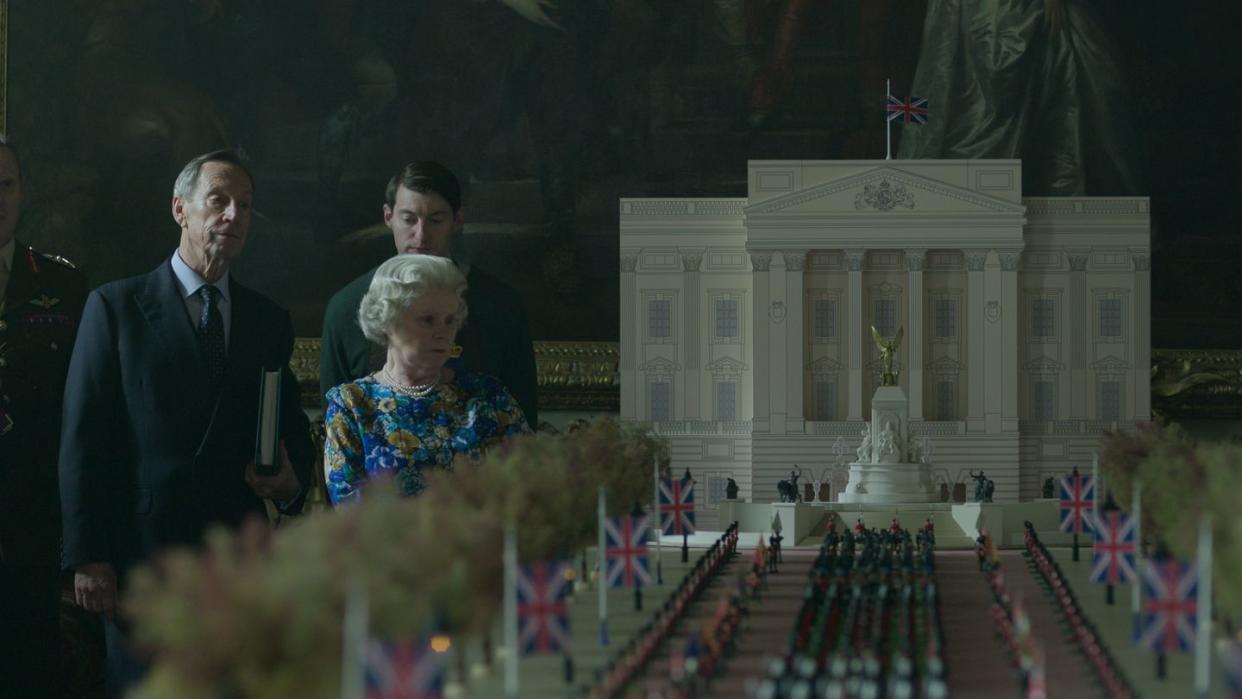Operation London Bridge: The True Story of the Plan for Queen Elizabeth's Funeral

"Hearst Magazines and Yahoo may earn commission or revenue on some items through these links."
"London Bridge is down." On September 8, 2022, this phrase went out along private channels to convey the news that Queen Elizabeth, the longest-lived and longest-serving monarch in British history, had died. Even as word of the passing of the 96 year old ruler began to travel around the globe, a plan more than half a century in the works was already in action: Operation London Bridge, the official plan for the procedures following the queen's death, and her royal funeral.
The planning for Elizabeth's eventual death features notably in the final episode of The Crown, but while the series posits that the considerations began in the early 2000s, in reality, details about the funeral had been in the works for much longer.
"From the moment the queen became monarch, Whitehall started the planning process about what would happen when she died," Philip Murphy, a professor of British and Commonwealth history at the University of London told the New York Times in 2022. While that much forethought might strike the average person as rather morbid, it was ultimately a practical concern—the death of a monarch inevitably draws an outpouring of mourners, all of whose travels and gatherings need to be carefully managed for public safety, and for such an iconic ruler as Elizabeth those numbers were sure to be staggering. Indeed, it's estimated that a quarter of a million people waited in the ten-mile line to pay their respects to the late queen at Westminster Hall during her lying-in-state, with a full million gathering in London for the funeral procession.
According to a 2017 investigation by The Guardian, the first plans for Elizabeth's funeral dated back to the 1960s, but the details became increasingly refined over the last couple of decades, with meetings two or three times per year with various departments to determine procedures.
Plans were put in place for any number of possibilities. For example, a BAe 146 jet from the Royal Air Force’s No 32 squadron was on call to take off with a specially made "first call coffin" from royal undertakers Leverton & Sons in the case that the monarch died while traveling abroad. (Members of the royal family are buried in lead-lined coffins to help preserve the body—Elizabeth's reportedly weighed between 550 and 700 pounds.) Alternate plans were put in place if the queen should pass away at Sandringham or, as she ultimately did, at her estate in Scotland, Balmoral.
Logistics from the 2012 Olympics in London were used to develop traffic flow needs for the funeral procession; a necessity in any era. However other, more modern concerns were also taken into account: According to planning documents procured by Politico in 2021 Whitehall departments were banned from retweeting in the wake of the queen's death. Plans were also put in place for changes to the royal family's website.
Another vital part of the planning dealt with the accession of King Charles, which legally took place the moment that Elizabeth died. The process of the announcement, as well as Charles's public actions in the days following were largely decided on beforehand, including the airing of his first speech as monarch on the evening of Elizabeth's passing in which he promised the nation to, "endeavor to serve you with loyalty, respect, and love."
You Might Also Like
